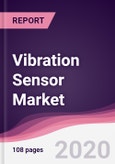What are Vibration Sensors?
Vibration sensor is also known as vibration transducer that converts vibrations into electrical equivalent output. These sensors are opted for measuring the levels of vibration in rotary machines. It is used for recording the vibrations in machines, thereby allowing professionals to detect the faults in the machine and identifying ways to rectify it. This sensor enhances the safety and precision of the machines as well as for the people working in that environment. The Vibration sensors can be used to detect the influence of vibrations and quality can be detected automatically in order to avoid reject parts.
What are the major applications for Vibration Sensors?
The various end users include Aircraft Design & Testing, Food Processing Industry, Automotive, Coal & Quarry Sector, Oil and Gas Industry, Medical Sector, Nuclear, Automobile, Consumer Electronics, Mining, Mineral Processing, Pulp and Paper, Food and Beverage, Pharmaceuticals and many more. Vibration sensors play a significant role in monitoring the operation of machines, bridges and buildings, warrant of security, prediction of natural disasters and more.
Vibration sensors market
Market Research and Market Trends of Vibration Sensors
The research indicates that there has been a development in a system that moves vibration sensor technology to the vehicle’s interior. The sensor technology provides 2D and 3D from inside the car and works in tandem with airbags, seatbelts and other built-in safety systems. The sensor can identify micro vibrations along with each individual’s heartbeat inside the car and also detects the location and physical dimensions of an object and person in the car. Depending on the respective vibrations, the sensor can also distinguish between people and objects as well as the presence of objects without a direct line of sight.
The introduction of hearing device which comprises a vibration sensitive transducer to detect vibrations when generated by a human voice, has been the latest trend in vibration sensors market. A digital signal processor for processing signals from the vibration sensitive transducer in order to detect a predetermined human voice vibration signal being related to the voice of the user of the hearing device, and control the hearing device in accordance therewith. The vibration sensitive transducer is secured to a shell of the hearing device so that vibrations are detected via a skull of the user of the hearing device.
Who are the Major Players in Vibration Sensors Market?
The companies referred to in the market research report includes Honeywell International Inc., Advanced Sensors Calibration, Analog Devices Inc., Futek Advanced Technology Inc., DIS Sensors, Dytran Instruments Inc., Global Sensor Technology, Hansford Sensors, LORD MicroStrain Inc. and more than 25 companies.
What is our report scope?
The report incorporates in-depth assessment of the competitive landscape, product market sizing, product benchmarking, market trends, product developments, financial analysis, strategic analysis and so on to gauge the impact forces and potential opportunities of the market. Apart from this the report also includes a study of major developments in the market such as product launches, agreements, acquisitions, collaborations, mergers and so on to comprehend the prevailing market dynamics at present and its impact during the forecast period 2018-2023.
Key Takeaways from this Report
Evaluate market potential through analyzing growth rates (CAGR %), Volume (Units) and Value ($M) data given at country level – for product types, end use applications and by different industry verticals.
Understand the different dynamics influencing the market – key driving factors, challenges and hidden opportunities.
Get in-depth insights on your competitor performance – market shares, strategies, financial benchmarking, product benchmarking, SWOT and more.
Analyze the sales and distribution channels across key geographies to improve top-line revenues.
Understand the industry supply chain with a deep-dive on the value augmentation at each step, in order to optimize value and bring efficiencies in your processes.
Get a quick outlook on the market entropy – M&A’s, deals, partnerships, product launches of all key players for the past 4 years.
Evaluate the supply-demand gaps, import-export statistics and regulatory landscape for more than top 20 countries globally for the market.
Table of Contents
Methodology

LOADING...







